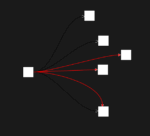The modern business landscape moves quickly, and customer retention is no longer just a benefit—it’s a strategic imperative. Today’s leading organizations proactively leverage predictive analytics and machine learning to anticipate customer churn before it occurs. By harnessing open-source technologies, businesses can efficiently and cost-effectively build models capable of accurately predicting churn, empowering them to act proactively and drive customer retention. This detailed guide explores the foundations of customer churn prediction, showcases practical open-source tools that enable impactful analytics, explains the necessary data engineering strategies, and breaks down best practices for implementing churn prediction projects in your organization. By the end, decision-makers will understand how leveraging analytics and open-source technology can transform client churn management from a reactive process into a proactive, strategic advantage.
Understanding Client Churn and Its Impact
Client churn, simply defined, is when customers stop doing business with your company. This seemingly straightforward event has extensive consequences. Churn directly affects revenue stability, customer lifetime value, and overall profitability. Additionally, retaining existing clients is traditionally more cost-effective than acquiring new ones, placing higher priority on preventing churn.
Organizations must grasp the factors that drive churn. These typically include pricing, customer service experiences, competitive positioning, and product fulfillment. Yet, qualitative analysis alone cannot provide reliable predictions—advanced analytics methods are essential. Through carefully collected quantitative data about customer behaviors, demographics, usage patterns, and customer interactions, organizations lay the groundwork for sophisticated churn prediction analytics.
At Dev3lop LLC, we recognize the importance of effective data engineering as the foundation of successful analytics projects. Proper data collection, cleaning, structuring, and engineering are key steps in any predictive model development. For a tailored solution, companies often consult expert data engineering specialists to ensure accuracy, reliability, and scalability from their data infrastructure. With neatly engineered data, even open-source predictive tools obtain unprecedented predictive power and deliver substantial business returns.
Why Open Source Analytics Tools Offer Strategic Value
The adoption of open-source predictive analytics tools brings significant strategic benefits. Unlike cost-prohibitive proprietary analytics software, open-source tools provide flexibility, affordability, and access to community-driven innovation. Business leaders, data scientists, and analysts regularly collaborate and improve these tools, ensuring an ever-evolving intelligence tailored to real-world scenarios.
In recent years, the open-source ecosystem exploded with reliable, high-performance solutions ideal for customer churn modeling. Tools like Python-based libraries such as pandas for data manipulation, scikit-learn for machine learning, and TensorFlow or PyTorch for deep learning have proven industry excellence. Similarly, support for R statistical programming with packages like caret, randomForest, and XGBoost enables flexibility and rapid deployment of effective churn prediction models.
Open-source technologies are continuously updated, reducing the risk of vendor lock-in and obsolescence. Through vibrant online communities and active forums, teams access vast resources, tutorials, and documentation—which lowers barriers for entry, accelerates training, and promotes knowledge transfer. Ultimately, this openness provides decision-makers greater control, faster project execution, and more transparent understanding of analytical processes and business outcomes. Businesses become capable of enhancing their predictive analytics strategies iteratively and continuously, maximizing long-term value.
Building a Churn Prediction Model: A Practical Example
To appreciate the practical value of open-source predictive analytics, it helps to understand the overall framework required to develop a churn prediction model. The common starting point is assembling relevant data, ensuring its cleanliness and consistency. Analysts examine historical customer records, purchase behaviors, service history, customer feedback, and any relevant demographics. This structured dataset forms the basis for model exploration and development.
Once data is prepared, the next step involves determining the appropriate modeling techniques. Well-established machine learning methods include logistic regression, decision trees, random forests, and gradient boosting models such as XGBoost. Open-source implementations of these methodologies, particularly scikit-learn for Python or caret for R, offer quick accessibility, stability, and robust flexibility to analysts and data scientists.
After building initial models, organizations evaluate results by analyzing accuracy, precision, recall, and AUC (Area Under the Curve). Visualization of predictive results through shap plots or feature importance graphs provides clear, actionable insights for decision-makers. The predictive model then moves toward operationalization—integrating predictions into CRM systems, marketing automation tools, and other organizational processes. Ongoing monitoring, recalibration, and iteration ensure an adaptive predictive framework that continuously evolves and improves.
Importance of Data Engineering and Infrastructure Alignment
An often overlooked but essential factor in successful churn prediction efforts is robust data engineering and infrastructure alignment. Reliable analytics depend on data pipelines that can support timely, accurate data integration, transformation, and storage. Even the best predictive tools cannot compensate for gaps in data quality or inadequate real-world implementation.
This step involves aligning infrastructure with predictive modeling needs. Cloud-based solutions such as AWS, Google Cloud Platform, or open-stack platforms enhance accessibility and scalability. Open source tools like Apache Spark and Apache Airflow greatly streamline data integration and preparation across complex datasets. When properly engineered, these tools enable quick model retraining, feature adjustments, and adaptive analytics suited to changing market conditions.
Partnering with experienced professionals specializing in data engineering (often available through specialized provider resources like data engineering consulting services) ensures smooth integration of data infrastructures, predictive modeling algorithms, and real-world operations. Aligning open-source analytics tools with solid, professionally engineered back-end infrastructures allows business leaders to derive lasting strategic value from predictive analytics initiatives.
Driving Innovation through Churn Prediction Analytics
Predicting client churn using open-source tools is not only about retaining current customers; it’s part of a broader innovation strategy. Modern businesses leveraging predictive analytics experience competitive advantages across multiple business units. Better visibility into customer behavior informs product innovation, tailored marketing campaigns, and efficient resource allocation. Utilizing open-source tools ensures rapid innovations, cost efficiencies, and enhances organizational agility.
The insights produced through churn analytics inform personalized customer experiences. Decision-makers empower teams to proactively intervene, build deeper client relationships, and foster greater brand loyalty. Integrating predictive intelligence into everyday business processes creates forward-looking agility that resonates throughout an enterprise, especially guiding leadership strategies. In other words, analytics empowered by open-source technology becomes a driving force behind sustained business innovation and customer trust.
Ultimately, businesses that strategically implement churn prediction using open-source analytics tools discover that they’re not merely predicting churn—they’re actively preventing it and building a resilient, customer-centric future. Organizations that proactively leverage advanced analytics often find themselves strategically positioned ahead of competitors who remain reactive. The question isn’t whether adopting such technology makes sense—it’s whether leaders can afford to delay. At Dev3lop, we support you every step of the way, ensuring the groundwork laid by analytics today leads your business to tomorrow’s opportunities.
Ready to Lead with Data-Driven Decisions?
Discover more through dedicated resources or engage directly with skilled professionals to transform your organization’s churn management strategy. Learn more on our data engineering consulting page.

























